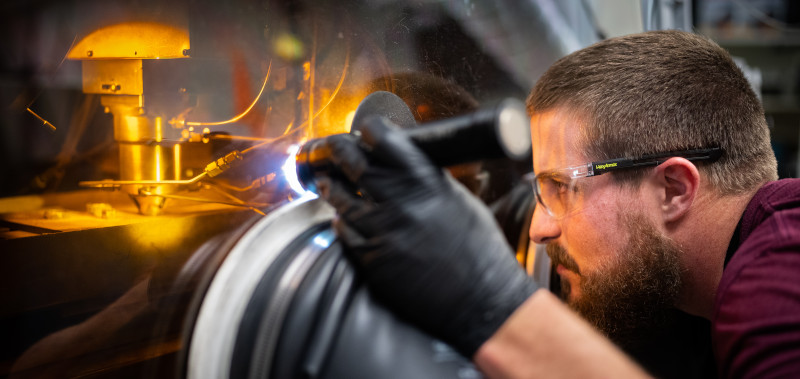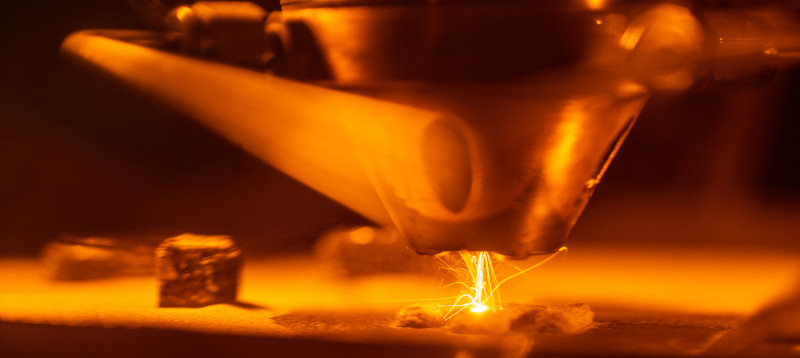
New superalloy could cut carbon emissions from power plants
By DE Staff
Additive Manufacturing Materials EnergySandia researchers repurpose 3D printing to discover high-performance material.

Sandia National Laboratories technologist Levi Van Bastian works to print material on the Laser Engineered Net Shaping machine, which allows scientists to 3D print new superalloys.
(Photo by Craig Fritz/Sandia National Laboratories)
Researchers from Sandia National Laboratories announced the creation of a 3D-printed superalloy that is stronger and lighter than materials currently used in gas turbine machinery. As a result, it could help power plants generate more electricity while producing less carbon and have broader impacts on the aerospace and automotive industries.
“We’re showing that this material can access previously unobtainable combinations of high strength, low weight and high-temperature resiliency,” said Sandia scientist Andrew Kustas. “We think part of the reason we achieved this is because of the additive manufacturing approach.”
The research team’s claim is based on the fact that the efficiency of fossil fuel and nuclear power plants is limited by the amount of heat their turbines can withstand. A turbine made from a metal that retains its strength at high temperatures would therefore allow the generators to convert more heat to electricity.
According to Sandia’s experiments, its superalloy – composed of 42% aluminum, 25% titanium, 13% niobium, 8% zirconium, 8% molybdenum and 4% tantalum – was stronger at 800°C than many other high-performance alloys, including those currently used in turbine parts, and still stronger when it was brought back down to room temperature.

Laser Engineered Net Shaping are helping scientists at Sandia National Laboratories rapidly discover, prototype and test new materials.
(Photo by Craig Fritz/Sandia National Laboratories)
The Sandia team used a 3D printer to melt together its constituent powdered metals and then print a sample of it. Moving forward, the team says it will explore whether advanced computer modeling techniques can help researchers discover more members of what could be a new class of high-performance, additively manufactured superalloys.
“These are extremely complex mixtures,” said Sandia scientist Michael Chandross, an expert in atomic-scale computer modeling who was not directly involved in the study. “All these metals interact at the microscopic – even the atomic – level, and it’s those interactions that really determine how strong a metal is, how malleable it is, what its melting point will be and so forth. Our model takes a lot of the guesswork out of metallurgy because it can calculate all that and enable us to predict the performance of a new material before we fabricate it.”
That said, the team acknowledges that its superalloy could be difficult to produce in large volumes without microscopic cracks and that the materials that go into the alloy are expensive.
The research was conducted in collaboration with Ames National Laboratory, Iowa State University and Bruker Corp. and funded by U.S. Department of Energy and Sandia’s Laboratory Directed Research and Development program. The team’s findings were recently published in the journal, Applied Materials Today.
www.sandia.gov
